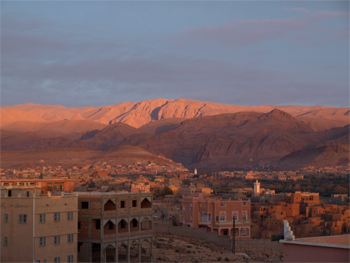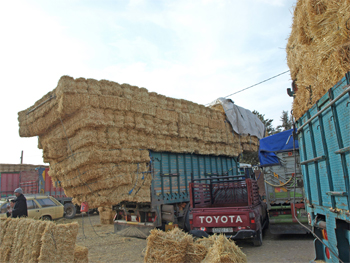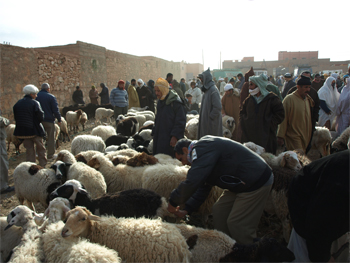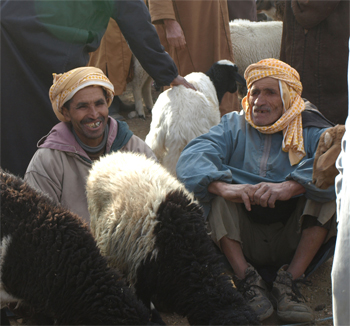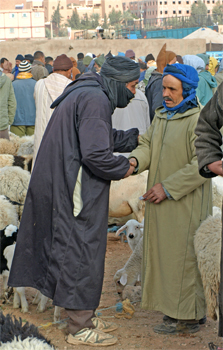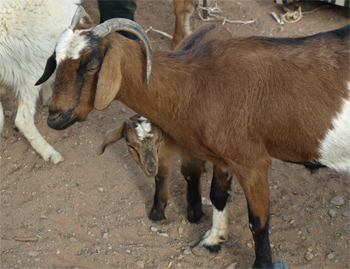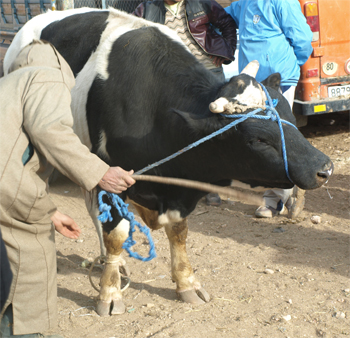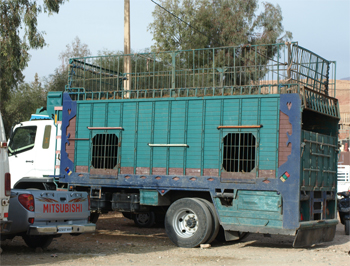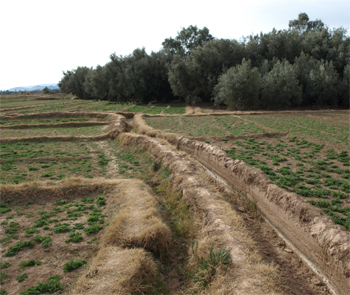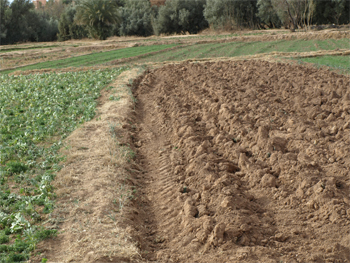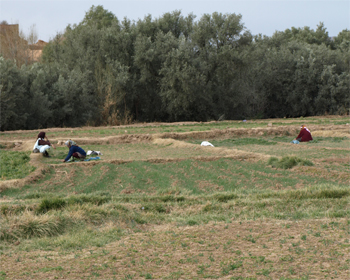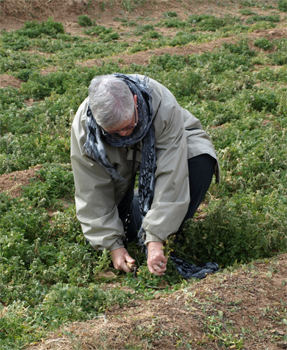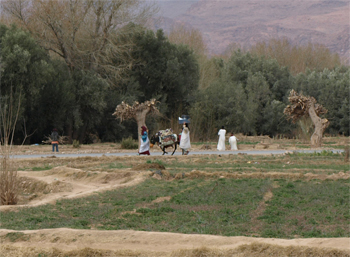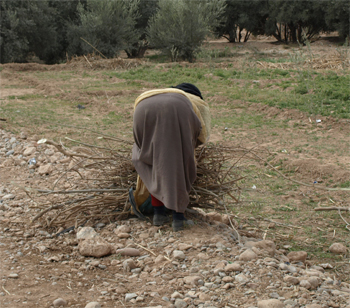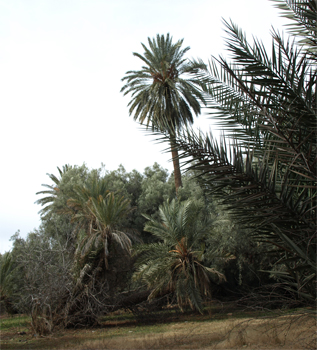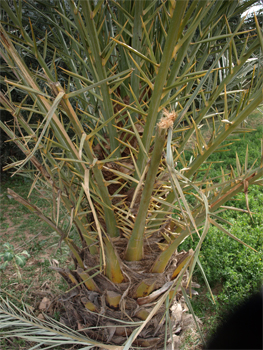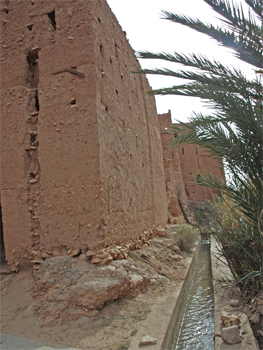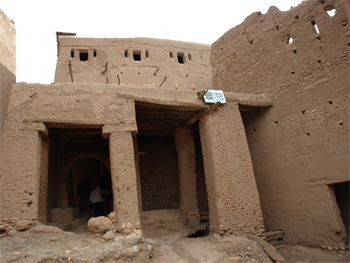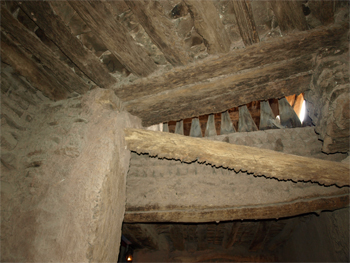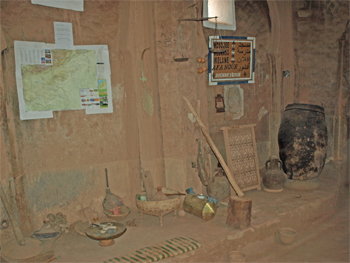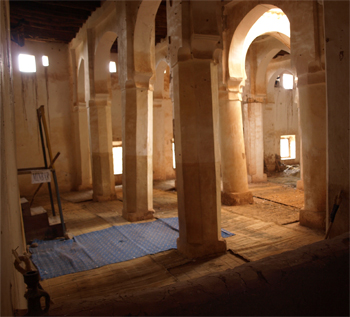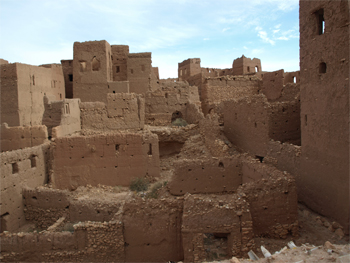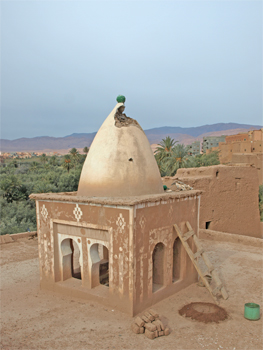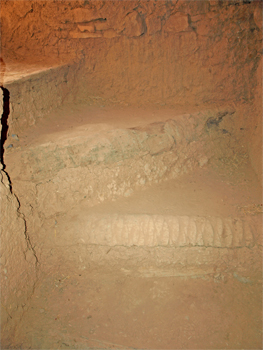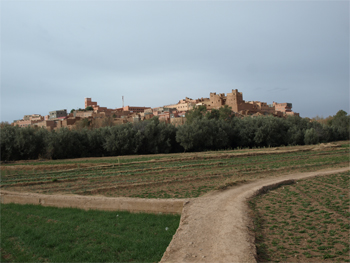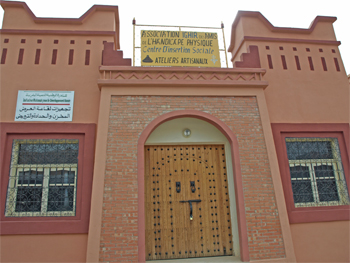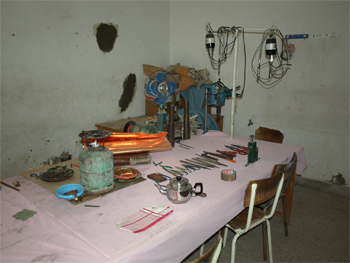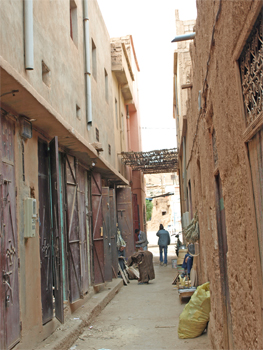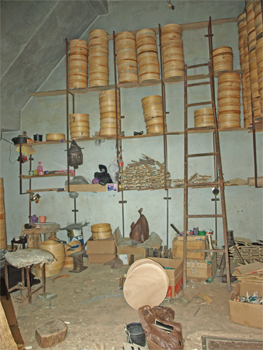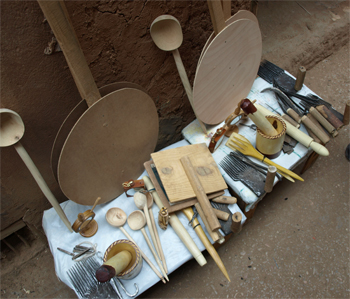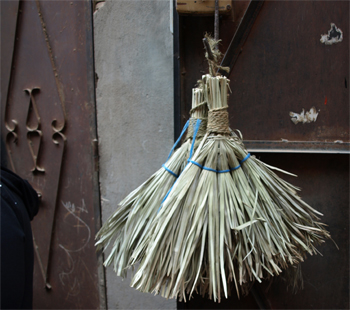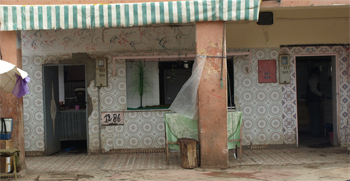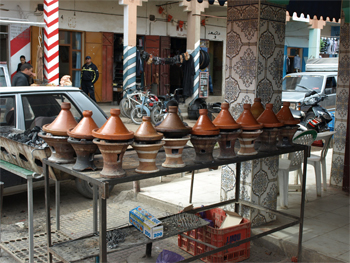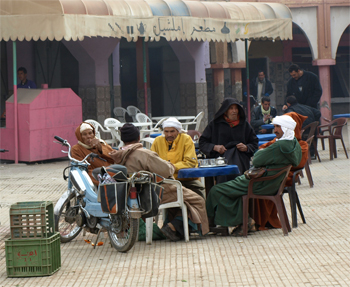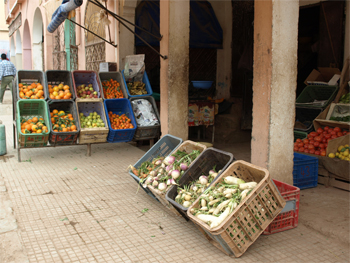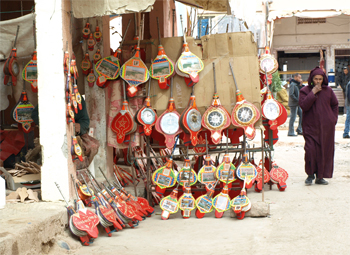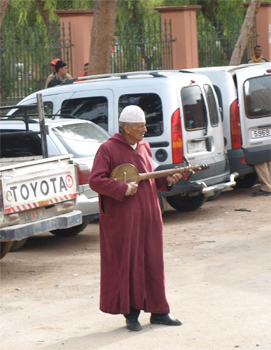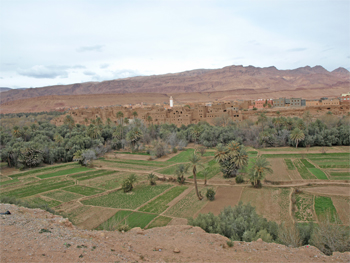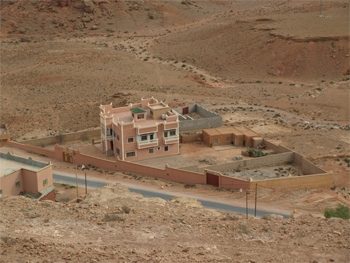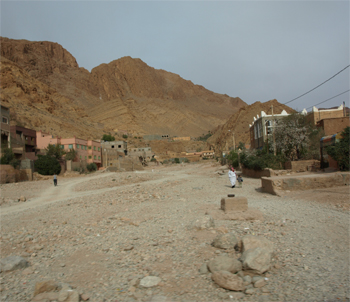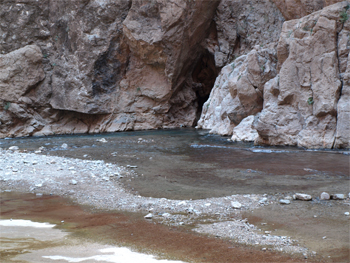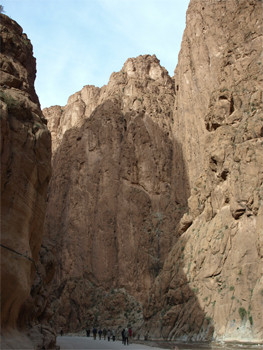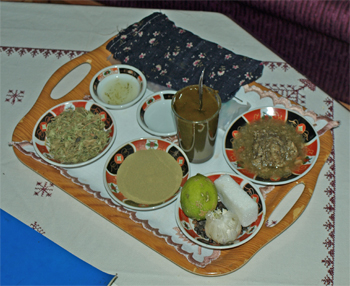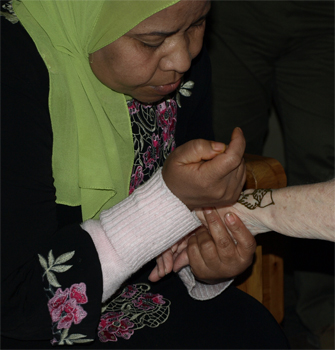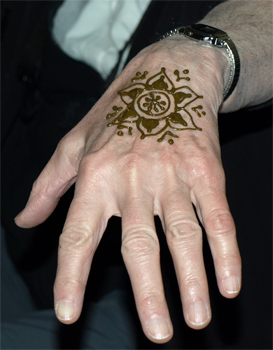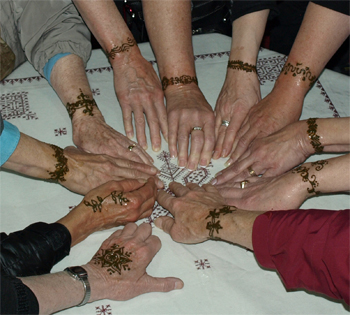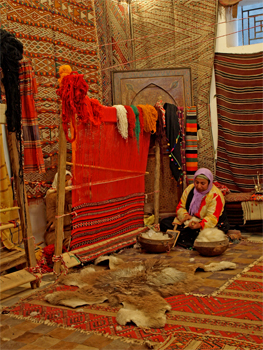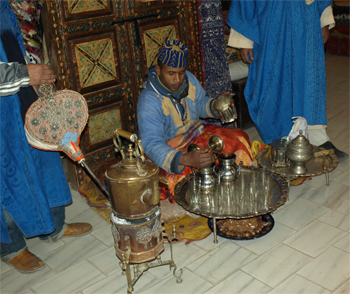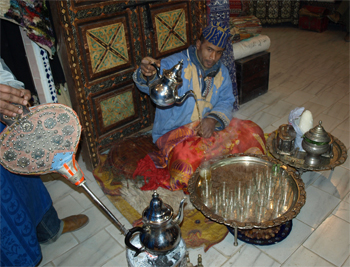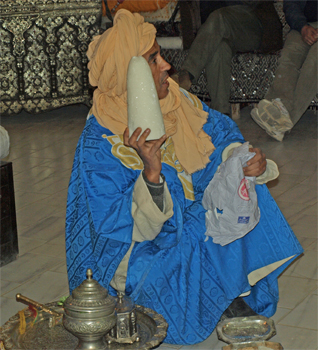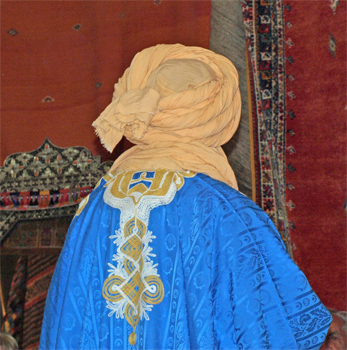After a beautiful sunrise, we started a very busy and long "Day in the Life of the Berbers" at the Saturday morning animal market. We parked with the overloaded hay and feed trucks. It is amazing how much they can overload the front and back of those trucks. We walked through the hundreds of sheep and goats - the little lambs and kids were so cute. People bring from one to maybe 10 animals from their herd and bargain and make cash sales with individuals for animals they want usually for breeding purposes. Then we went to the cow yard where the same was occurring. We watched them load cows into the back of small pick-up trucks. Very interesting.
Sunrise over Tineghir
|
Tineghir animal market - we saw lots of trucks on the highways with loads like this |
Tineghir animal market |
Tineghir animal market - waiting for a buyer
|
Tineghir animal market - morning gossip
|
Tineghir animal market - peek-a-boo |
Tineghir animal market - where to next?
|
Tineghir animal market - all-purpose vehicle |
Next we walked among the village valley farm plots. A farmer pays for the diesel fuel to pump well water onto their plots. Later we stopped and used a woman's tool to try cutting some alfalfa like she did. The alfalfa is put onto a shawl and bundled together to carry on her back to her animals. There were also many almond, date and olive trees in this public farm area.
Irrigation ditch
|
Freshly plowed |
Harvesting alfalfa by hand |
Phyllis tries it
|
On the way to market |
Picking up sticks
|
Date palms
|
Date palm |
Across the valley we entered the old town that was ruined and vacated when heavy rains dissolved many of the adobe structures. In the middle of the old town is a 300 year old Madrasa or school and mosque for Saharan kids. The bath, dormitory, prayer room and terrace are in fairly good condition and maintained by a caretaker.
We wandered through the town market where everything was for sale in the small stalls lining the alleys. The most interesting section was where the artisans had their shops. Some made sieves for flour and grains, paddles for carding wool, paddles for baking bread in wood ovens, dresses, yarn and textiles, and bellows. Tineghir is famous for making bellows for wood ovens and stoves.
Street of the woodworkers
|
Wood products |
Wood products
|
Brooms |
Even the store fronts have elaborate tile work |
Tagines cooking lunch
|
Morning tea break
|
Veggies |
Bellows - symbol of Tineghir |
Street musician
|
We then visited the OAT foundations boarding school for poor boys (we didn't take any pictures). The boys range from 12 to 22 and come from very poor families in this area or from semi-nomadic families with no money or who are orphans. The girls' boarding school is a few blocks away. We toured their facilities and ate lunch in the library with several of the boys (about 15 and 16 years old) and had them practice their English. They were shy at first but were very accommodating.
Next we drove to Toudgha Gorge. On the way we passed interesting farm and town scenery. At the Gorge we walked a little way along the river. It is a very impressive and deep gorge. The water was very clear and flows to the valley with the farm plots. We looked up a long way.
|
Farm plots
|
House and compound |
Street in small town
|
Toudgha Gorge |
Toudgha Gorge
|
Next we went to a lady's home in town and learned about henna and all of us got tattoos. Henna is grown locally, dried, and crushed into a powder with a pistil and mortar. The powder is mixed with water to make a paste. The woman used a syringe with a cut needle and squeezed out designs like she was decorating a cake. After the henna dries on your skin (with some help from a heater), it is "set" with a "sauce" of garlic, sugar, lime, and black pepper. Marge got a design on her left hand and I got a bracelet drawn on my wrist.
End of a very long and very interesting day!
